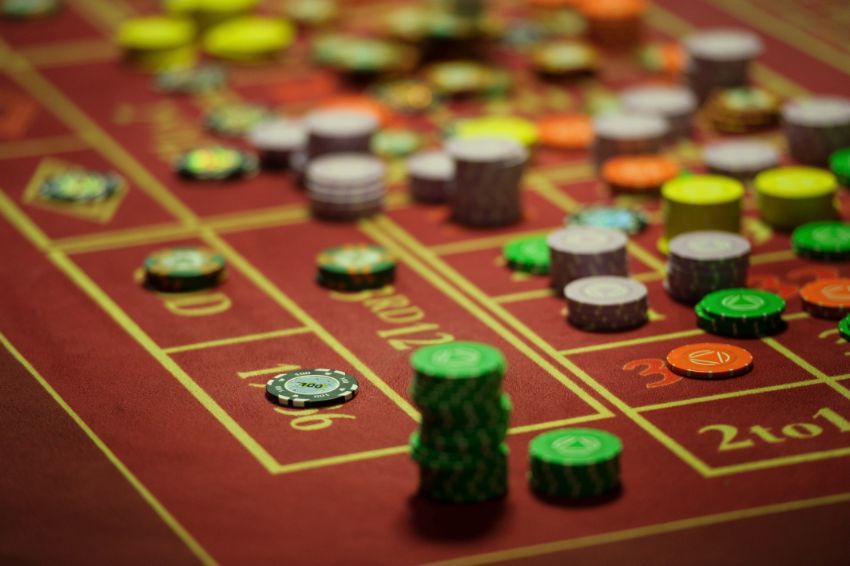When entering a casino, comprehending payout percentages is essential for maximizing potential winnings at slots and table games. Payout percentages, commonly known as Return to Player (RTP), indicate the proportion of total wagers that a game is programmed to return to players over an extended period.
For instance, RTP for slot machines can range from approximately 85% to 98%, whereas table games such as blackjack may offer RTP values as high as 99.5%, assuming optimal play strategies are employed.
Understanding these percentages allows players to make more informed decisions regarding which games to play. Higher RTP values generally suggest a better likelihood of returning a larger portion of wagers back to players. Consequently, selecting games with favorable RTP can enhance overall gaming outcomes.
Moreover, it is important to recognize that RTP is a theoretical average calculated over a significant number of spins or hands, and actual results can vary in the short term.
Therefore, while RTP can serve as a valuable tool in formulating a gaming strategy, it should not be viewed as a guarantee of specific returns. Analyzing RTP alongside other game factors, such as house edge and volatility, can provide a more comprehensive understanding of potential returns in a gambling context.
Key Takeaways
- Payout percentages represent the long-term expected return to players, guiding them to games with better odds.
- Slots have RTPs typically ranging from 85% to 98%, whereas table games can exceed 99% with optimal strategies.
- Higher payout percentages mean lower house edges, leading to better bankroll longevity and potential winnings.
- Understanding RTP helps players choose games and make strategic betting decisions for improved outcomes.
- Effective bankroll management and game strategy knowledge enhance the benefits of high payout percentages.
What Are Payout Percentages?
When exploring the realm of casinos and gambling, one important concept to understand is payout percentages. These percentages indicate the proportion of money that a game is expected to return to players over time.
For example, a slot machine with a payout percentage of 95% is projected to return $95 for every $100 wagered, on average, although this doesn’t guarantee that individual sessions will yield this return. Instead, it reflects the expected outcome over a prolonged period.
Understanding payout percentages can aid players in assessing which games may provide better returns. Generally, games with higher payout percentages are associated with more favorable odds for players.
How RTP Is Calculated
Calculating RTP, or Return to Player, involves a systematic analysis of the total amount wagered on a game in relation to the total amount paid out to players.
To ascertain a game’s RTP, it’s necessary to examine long-term data. For instance, if players wager a total of $1,000,000 on a game and the game returns $950,000 to players, the RTP would be calculated at 95%. This percentage indicates the average amount players can expect to win back from their bets over an extended period.
It is important to note that RTP is a theoretical figure, determined over millions of bets rather than a single gaming session.
Understanding RTP provides players with insights into the payout potential of a game, which can aid in making informed decisions when engaging in casino activities.
RTP in Slot Machines
Slot machines are widely recognized as one of the most popular forms of gambling in casinos. A crucial aspect of these machines is their RTP, or Return to Player, which signifies the percentage of wagered money that’s expected to be returned to players over an extended period.
For instance, a slot machine with a 95% RTP implies that, on average, it will return $95 for every $100 wagered.
It is important to note that RTP reflects a long-term average and doesn’t guarantee specific outcomes for individual gaming sessions. Players shouldn’t expect to receive the RTP amount every time they play, as results can vary significantly in the short term.
Generally, higher RTP values indicate better odds for players. Consequently, it’s advisable to review a slot’s RTP before engaging in play.
RTP values can differ across various slot games, making it essential for players to compare different options to identify machines with favorable return rates.
This informed approach can aid in making more strategic betting decisions within the gaming environment.
RTP in Table Games
Table games, such as blackjack, roulette, and poker, feature specific Return to Player (RTP) values that indicate the percentage of total bets that players can expect to receive back over time.
In blackjack, for example, the RTP can reach up to 99.5% when employing optimal strategy. In contrast, the RTP for roulette varies depending on the version; the American roulette has an RTP of approximately 94.74%, while the European version offers a higher RTP of around 97.3%, attributed to the additional zero on the American wheel.
The RTP in poker is influenced by the variant being played and the player’s skill level, typically ranging from 95% to 99%.
Understanding these RTP values is essential for players when selecting games with favorable potential returns. Generally, higher RTPs correspond to better odds for players; however, it’s crucial to acknowledge that skill and strategy also significantly impact a player’s ability to maximize winnings in table games.
Comparing RTPs: Slots vs. Tables
When assessing casino games, it’s essential to consider the differences in Return to Player (RTP) values between slot machines and table games.
Slots typically exhibit a range of RTP values, which can vary from 85% to 98%, depending on the specific machine and the casino’s operational settings. In contrast, table games generally present higher RTP values.
For example, blackjack can achieve an RTP as high as 99.5% when optimal strategies are applied, while games like baccarat and roulette often have RTPs around 98%.
Understanding these differences can assist players in making more informed decisions regarding their betting strategies. In general, table games tend to offer a more favorable RTP compared to the majority of slot machines.
House Edge Explained
When assessing casino games, the concept of house edge is a crucial factor to consider. The house edge indicates the casino’s statistical advantage over players, ensuring profitability over time.
It’s represented as a percentage, reflecting the average loss players can expect in relation to their initial bet. For instance, a game with a house edge of 5% implies that, on average, a player may lose $5 for every $100 wagered over an extended period.
House edges vary significantly across different games. For instance, blackjack can have a house edge as low as 0.5% when players employ optimal strategy, whereas certain slot machines may exhibit house edges that exceed 10%.
Understanding the house edge is important for making informed decisions regarding where to place bets and can direct players towards games that offer more favorable odds.
Impact on Your Winnings
Understanding the impact of payout percentages on your winnings is essential for developing an effective gambling strategy. Selecting games with higher payout percentages can improve your potential for winning over time.
For example, in a slot machine with a 95% payout percentage, the average return is $95 for every $100 wagered. Conversely, games with lower payout percentages may deplete your bankroll more quickly, thus diminishing your overall playtime and opportunities for significant wins.
In table games, awareness of payout percentages can inform better betting decisions. Certain bets in games like blackjack or roulette may offer a more advantageous payout structure, allowing players to refine their strategies by concentrating on these more favorable options.
Understanding these dynamics can aid in making informed choices while gambling.
Tips for Maximizing RTP
Maximizing RTP (Return to Player) can enhance the overall gambling experience and may improve potential winnings. One of the primary strategies is to select games with the highest RTP percentages. Many slot machines and table games display their RTP rates, making it essential to conduct research prior to playing to identify games that offer better returns.
Utilizing bonuses and promotions from casinos is another method to increase your bankroll and extend your playtime. These offers can provide additional funds or free spins, which can be beneficial for maximizing RTP as they allow for more opportunities to play without additional financial investment.
Effective bankroll management is crucial. Setting predefined limits for losses and wins can help players avoid excessive losses and promote longer play sessions. Sticking to these limits can maintain a more sustainable gambling practice.
Furthermore, understanding the rules and strategies of the games is important. In table games such as blackjack or poker, applying sound strategies can improve the odds of winning. Knowledge of the game mechanics and strategic decision-making can enhance the likelihood of favorable outcomes.
Frequently Asked Questions
How Often Should Casinos Update Their Payout Percentage Information?
You should expect casinos to update their payout percentage information regularly, ideally quarterly. This guarantees transparency and keeps players informed about their chances, fostering trust and maintaining a fair gaming environment.
Can Payout Percentages Vary Between Different Regions or Countries?
Yes, payout percentages can vary between different regions or countries. Regulations and gaming laws differ, affecting how casinos operate. Always check local rules to understand what to expect before you play. It’s essential for informed gambling.
Are There Industry Standards for Acceptable Payout Percentages in Casinos?
Yes, there are industry standards for acceptable payout percentages in casinos. You will discover that these standards vary by jurisdiction, ensuring fairness. Always check local regulations to understand what to expect when playing at different casinos.
How Do Payout Percentages Influence Casino Marketing Strategies?
Payout percentages play a huge role in casino marketing. You’ll see higher payout rates advertised to attract more players, making the casino seem fairer and more generous. It’s all about building trust and encouraging longer play.
Can Players Access Historical Payout Percentage Data for Specific Games?
You can access historical payout percentage data for specific games at some casinos. Check the casino’s website or ask the staff directly. It’s useful for understanding which games have the best odds over time.
Conclusion
By understanding payout percentages and how they affect your winnings, you can make smarter choices at both slots and table games. Always aim for games with higher RTPs and employ effective betting strategies. This way, you’ll enhance your gaming experience and maximize your potential returns. Remember, knowledge is power—so use this information to improve your odds and enjoy a more rewarding time at the casino. Happy gaming!

